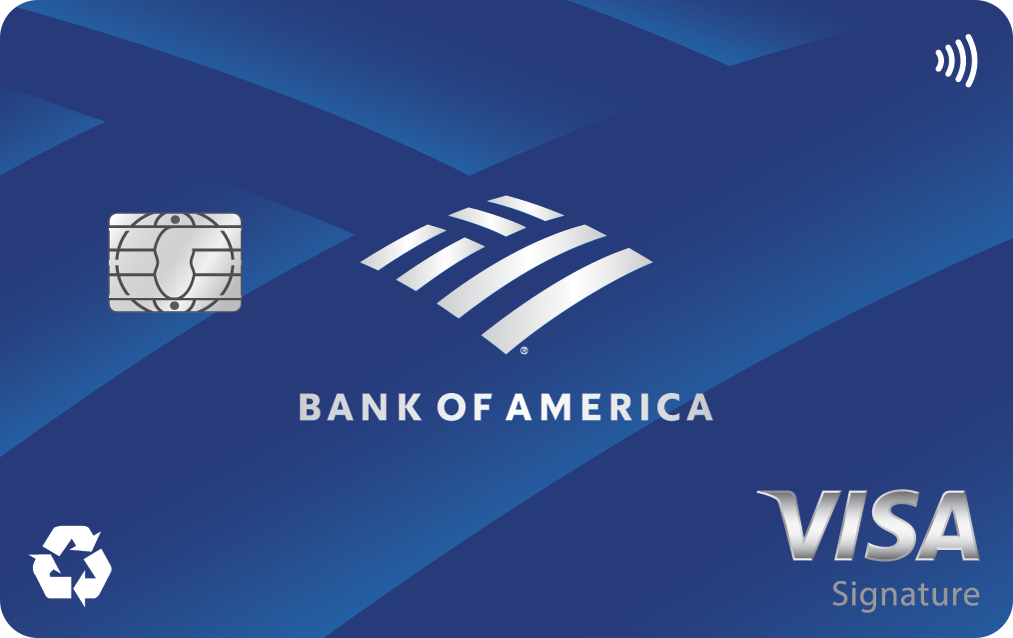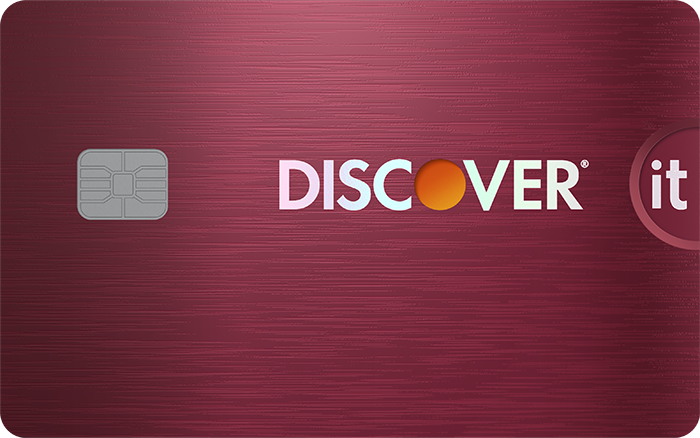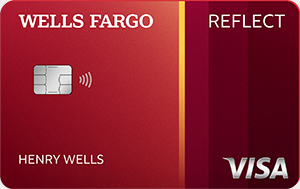Credit cards are a powerful financial tool, but for beginners, they can seem confusing or intimidating. That's where we come in. Below we'll demystify how credit cards work, from choosing the right card to managing payments responsibly.
By the end, you'll feel confident using credit cards as a smart part of your financial strategy. Let's get started.
What is a credit card?
A credit card is a financial tool issued by banks that lets you borrow money up to a certain limit. Unlike a debit card, which uses money directly from your bank account, a credit card lets you borrow funds now and pay them back later.
Think of it as a temporary loan that gives you more flexibility in managing your finances. Used wisely, it can help you build credit, earn rewards, and offer protections like fraud prevention.
How do credit cards work?
There are a few nuances to how credit cards work that are different from a debit card. We'll break each one down below.
Credit limit
Each card has a credit limit, which is the maximum amount the issuer is willing to lend you at any given time. When you use your credit card, you're essentially borrowing money that you'll need to pay back later. As you make payments, the amount of credit you've used becomes available again for future use.
Billing cycles and payments
Each credit card operates on a billing cycle, typically lasting about 30 days. At the end of this period, you'll receive a statement summarizing your transactions, any interest charges, fees, and the total balance owed.
The statement also indicates the minimum payment, which is the smallest amount you must pay to avoid penalties, and the due date by which it should be paid. While paying only the minimum keeps your account in good standing, it often results in significant interest charges on the remaining balance.
Annual percentage rate (APR)
Interest rates, commonly expressed as the annual percentage rate (APR), are a critical component of how credit cards work. If you don't pay your full balance by the due date, the issuer will charge interest on the remaining amount, typically calculated daily.
However, most credit cards offer a grace period, which is the time between the end of your billing cycle and your payment due date. If you pay your balance in full during this grace period, you can avoid paying any interest.
Fees
Credit cards may also come with various fees, such as annual fees, late payment fees, or foreign transaction fees. Understanding these costs and using your card responsibly -- by making on-time payments and keeping your balance low -- can help you avoid unnecessary charges and build a positive credit history.
Credit card comparison
We recommend comparing options to ensure the card you're selecting is the best fit for you. To make your search easier, here's a short list of standout credit cards.
| Offer | Our Rating | Welcome Offer | Rewards Program | APR | Learn More |
|---|---|---|---|---|---|
|
5.00/5
Our ratings are based on a 5 star scale.
5 stars equals Best.
4 stars equals Excellent.
3 stars equals Good.
2 stars equals Fair.
1 star equals Poor.
We want your money to work harder for you. Which is why our ratings are biased toward offers that deliver versatility while cutting out-of-pocket costs.
|
Discover will match all the cash back you’ve earned at the end of your first year. INTRO OFFER: Unlimited Cashback Match for all new cardmembers–only from Discover. Discover will automatically match all the cash back you’ve earned at the end of your first year! There’s no minimum spending or maximum rewards. You could turn $150 cash back into $300. | 1% - 5% Cashback Earn 5% cash back on everyday purchases at different places you shop each quarter like grocery stores, restaurants, gas stations, and more, up to the quarterly maximum when you activate. Plus, earn unlimited 1% cash back on all other purchases. |
Intro: Purchases: 0%, 15 months Balance Transfers: 0%, 15 months Regular: 17.74% - 26.74% Variable APR *Rates as of December 15, 2025 |
||
|
5.00/5
Our ratings are based on a 5 star scale.
5 stars equals Best.
4 stars equals Excellent.
3 stars equals Good.
2 stars equals Fair.
1 star equals Poor.
We want your money to work harder for you. Which is why our ratings are biased toward offers that deliver versatility while cutting out-of-pocket costs.
|
N/A | N/A |
Intro: 0% intro APR for 21 months from account opening on purchases and qualifying balance transfers Purchases: 0% intro APR for 21 months from account opening on purchases Balance Transfers: 0% intro APR for 21 months from account opening on qualifying balance transfers Regular: 17.49%, 23.99%, or 28.24% Variable APR |
||

Apply Now for Bank of America® Travel Rewards credit card
On Bank of America's Secure Website. |
4.70/5
Our ratings are based on a 5 star scale.
5 stars equals Best.
4 stars equals Excellent.
3 stars equals Good.
2 stars equals Fair.
1 star equals Poor.
We want your money to work harder for you. Which is why our ratings are biased toward offers that deliver versatility while cutting out-of-pocket costs.
|
25,000 points (worth $250) 25,000 online bonus points after you make at least $1,000 in purchases in the first 90 days of account opening - that can be a $250 statement credit toward travel purchases | 1.5-3 points per dollar Earn unlimited 1.5 points per $1 spent on all purchases, with no annual fee and no foreign transaction fees, and your points don't expire as long as your account remains open. Earn 3 points per $1 spent on travel purchases booked through the Bank of America Travel Center. |
Intro: See Terms for See Terms billing cycles for purchases, and for any balance transfers made in the first 60 days. After the Intro APR offer ends, a Variable APR that’s currently See Terms will apply. A 3% Intro balance transfer fee will apply for the first 60 days your account is open. After the Intro balance transfer fee offer ends, the fee for future balance transfers is 4%. Balance transfers may not be used to pay any account provided by Bank of America. Purchases: See Terms Balance Transfers: See Terms Regular: See Terms |
Apply Now for Bank of America® Travel Rewards credit card
On Bank of America's Secure Website. |
At Motley Fool Money, every credit card we review is rated on a 5-star scale, scored to a tenth of a point. Our ratings weigh the features that matter most: rewards rates, 0% intro APR offers, welcome bonuses, fees, and perks like travel credits and purchase protections.
We score cards within four primary categories:
- 0% intro APR cards for paying down balances or financing purchases
- Travel cards for maximizing points, miles, and perks on the road
- Cash back and rewards cards for everyday spending value
- Business cards designed to fit company expenses and growth
Top-rated cards typically combine strong long-term value, attainable bonuses, low fees, and standout protections or perks.
We combine these factors with an evaluation of brand reputation and customer satisfaction to ensure you're getting the best credit card recommendations. Our aim is to maintain a balanced best-of list featuring top-scoring credit cards from reputable brands. 'Best for' category selections on this page are determined by our editors, and a single card may be recognized in multiple categories.
Ordering within lists is influenced by advertiser compensation, including featured placements at the top of a given list, but our product recommendations are NEVER influenced by advertisers. Learn more about how Motley Fool Money rates credit cards.
At Motley Fool Money, every credit card we review is rated on a 5-star scale, scored to a tenth of a point. Our ratings weigh the features that matter most: rewards rates, 0% intro APR offers, welcome bonuses, fees, and perks like travel credits and purchase protections.
We score cards within four primary categories:
- 0% intro APR cards for paying down balances or financing purchases
- Travel cards for maximizing points, miles, and perks on the road
- Cash back and rewards cards for everyday spending value
- Business cards designed to fit company expenses and growth
Top-rated cards typically combine strong long-term value, attainable bonuses, low fees, and standout protections or perks.
We combine these factors with an evaluation of brand reputation and customer satisfaction to ensure you're getting the best credit card recommendations. Our aim is to maintain a balanced best-of list featuring top-scoring credit cards from reputable brands. 'Best for' category selections on this page are determined by our editors, and a single card may be recognized in multiple categories.
Ordering within lists is influenced by advertiser compensation, including featured placements at the top of a given list, but our product recommendations are NEVER influenced by advertisers. Learn more about how Motley Fool Money rates credit cards.
Pros and cons of credit cards
Benefits
- Building and improving credit history
- Rewards, cash back, and travel perks
- Fraud protection and purchase insurance
- Convenience and flexibility
Potential risks
- Accumulating debt and the impact of high interest rates
- Overspending and financial mismanagement
- Credit score damage due to late payments
How to choose the right credit card for you
Choosing your first credit card is a big decision -- after all, it could mean the difference between earning free flights, cash back, or just paying off debt faster. Here are some things to keep in mind.
Credit score requirements
Some of the top cards on the market have credit score requirements so card issuers feel comfortable knowing you can handle the card. If your credit score isn't high enough to qualify, then full stop, you aren't going to be approved. So find out what your credit score is and how it compares to the cards you're admiring -- if you aren't there yet, don't worry, you can get there, but you'll need to start elsewhere.
APR and fees
It's crucial to pay close attention to a card's APR, as it can quickly add up if you're not diligent about paying off your balance each month. APR can come in three forms: fixed, variable, or promotional.
- Fixed APR stays the same throughout the life of your card.
- Variable APR can change based on shifts in the Fed's interest rates.
- Promotional APR offers a period of low or zero interest before the standard rate kicks in.
If you carry a balance that's higher than your minimum payment at the end of your billing cycle, interest will be charged on the remaining amount.
Additionally, here are some common card fees to keep in mind:
- Annual fee: The yearly cost to have the card.
- Late fees: Charged if you miss a payment or don't meet the minimum balance on time.
- Foreign transaction fees: If applicable, these are applied when you use your card overseas.
- Over-limit fees: Charged if your balance exceeds your credit limit.
Not all fees are deal-breakers -- they really depend on how you plan to use the card. For instance, foreign transaction fees won't matter much if you don't travel internationally, and an annual fee might be worth it if the rewards you earn outweigh the cost. So, while fees are something to consider, don't let them deter you entirely -- just weigh them against the benefits based on your specific needs.
Rewards and benefits
Now for the fun part -- who doesn't love free stuff, right?
How you plan to use your card will make a big difference in the rewards you can earn. Are you a frequent traveler looking for free flights and airport lounge access? Or perhaps you're someone who is hoping to earn cash back on your regular purchases? Maybe you're carrying credit card debt and are looking to transfer it to a card with a 0% intro APR period to get things back on track.
Take some time to think about what benefits matter most to you. That will help you choose the right card to fit your needs and maximize the rewards you can earn.
How to apply for a credit card
Once you've chosen the right card for your needs and confirmed your credit score meets the requirements, you're ready to apply. To complete the application, you'll typically need to provide some personal details, such as:
- Date of birth
- Address
- Employment status
- Proof of income
After submitting your application, the lender will usually conduct a hard inquiry on your credit report to assess your reliability. If your application is approved, you can expect to receive your card in the mail in just a few days.
What to do if your application is rejected
If your application is denied, don't be discouraged -- building credit takes time. Even the most reliable people have to build credit and show reliability for lenders to take a chance on them.
Technically, you can request reconsideration by calling the phone number provided with your rejection notice to make your case.
If that doesn't work, your best move is to apply for a card you can qualify for, like a secured card or one designed for those with low credit. By using it responsibly for six to 12 months and paying on time, you'll boost your credit score and improve your chances of qualifying for higher-tier cards with better perks.
Managing your credit card responsibly
Once your credit card is in hand, it's important to use it wisely. Credit card debt can accumulate quickly if you're not intentional about how you manage your card. Here are some essential tips to help you stay on track and avoid common pitfalls.
Pay your balance in full every month
One of the most important things you can do is to pay off your balance in full each month. This way, you avoid paying interest on any of your purchases. When you carry a balance, interest charges start to pile up, making it harder to pay off the principal.
Paying in full keeps your finances in check and helps you avoid falling into debt. If paying in full isn't possible, aim to pay as much as you can to minimize interest.
Set up automatic payments to avoid missed payments
Setting up automatic payments ensures that you never miss a due date. Late payments not only result in fees, but they can also hurt your credit score.
If you're unable to pay the full amount, at least pay the minimum payment each month to avoid penalties. Automatic payments or reminders will help you stay on top of your bills without worrying about deadlines.
Stay at a low credit utilization rate
Credit utilization -- the amount of credit you use relative to your total credit limit -- is a key factor in determining your credit score. Aim to keep your balance below 30% of your credit limit (for example, if your credit limit is $1,000, try to keep your balance under $300). Lower utilization shows lenders that you're responsible with credit, which can positively impact your credit score.
Monitor your spending
It's easy to lose track of how much you're spending when you swipe your card regularly. Use your card issuer's app or website to monitor your transactions.
This helps you stay within your budget and avoid impulsive purchases that can lead to overspending. Tracking your spending will give you a clearer picture of where your money is going, helping you make smarter financial decisions.
Final thoughts
A credit card can be a powerful tool in your financial toolbox -- when used responsibly. By staying informed, paying attention to fees, and keeping your spending in check, you can unlock all the benefits credit cards have to offer without falling into the traps that lead to debt. Whether you're looking to build credit, earn rewards, or simply enjoy the convenience of cashless payments, understanding the basics of credit cards is the first step toward financial success.
Ready to start shopping for your card? Check out our top credit card picks of 2025.
FAQs
-
Using a credit card responsibly -- by making on-time payments and keeping your balance low -- shows lenders you’re reliable. This helps improve your credit score over time.
-
Missing a payment can lead to late fees, higher interest charges, and damage to your credit score. Setting up automatic payments or reminders can help you avoid this.
-
Yes, many credit card issuers offer secured cards or starter cards designed for people with no credit history. These can help you build credit when used responsibly.
The Motley Fool owns shares of and recommends Visa.

